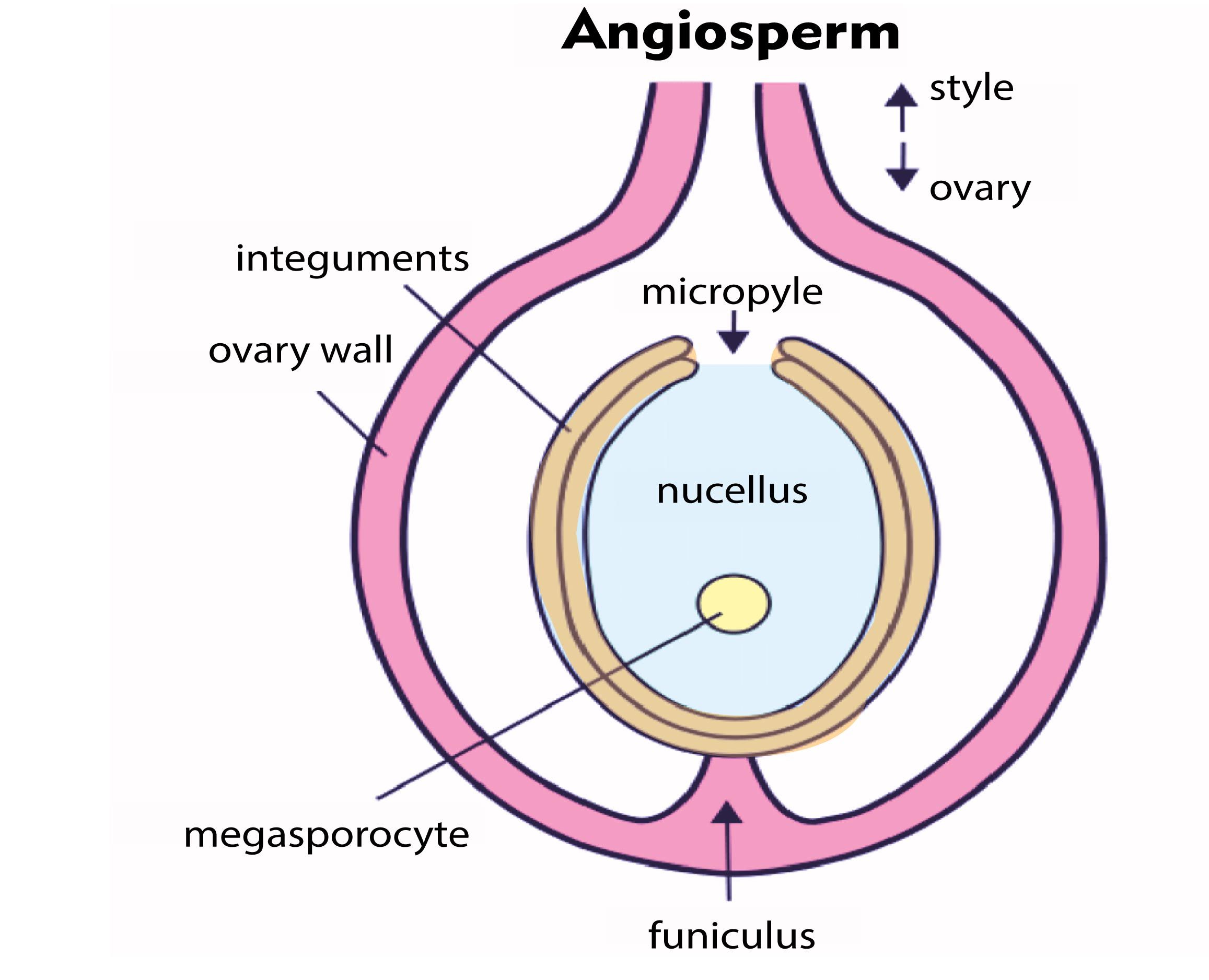
In ovule, the endothelium is
(a)Nucellus
(b)Nucellus surrounding the embryo sac
(c)Tissue near chalaza
(d)Inner part of the integument
Answer
480.9k+ views
Hint: Basically, it is separated from the nucellus and embryo sac by layers of cuticles. The thickness, consistency, and progression of the cuticle are variable in various taxa as well as at better places in similar species. The cuticular layers have prominent interruptions, and the embryo sac wall bears certain ingrowths in the regions of these discontinuities.
Complete answer:
In certain plants, which have unitegmic and tenuinucellate ovules, the nucellus degenerates at a beginning phase. The innermost layer of the integument gets specific to play out the nutritive capacity of the developing embryo sac in such a ovule. This particular tissue is known as the Endothelium. The endothelium is commonly single-layered and the cells are radially prolonged and have thick cytoplasm. So, in the ovule Endothelium is the inner part of the integument.
Additional Information: The endothelium is an additional cell layer that can be differentiating from the inner epidermis of the ovule integument. The endothelium separates from the integument after fertilization and it becomes an independent tissue developing next to the growing embryo sac in tomato (Solanum lycopersicum L.). When fertilization does not take place, the endothelium may proliferate and form pseudo-embryo.
So, the correct answer is the ‘inner part of integument’.
Note: The development of ovules in endothelial cells to change their structural and functional specialization from meristematic to secretory and then back to meristematic, and it also proliferates until seeds fully mature. The secretory action of the endothelium is fundamental for the lysis of dying cells of the integument and gives the space to the development of the new sporophyte. Although in ovules of parthenocarpic fruits, pseudo-embryo cells do not change their structural and functional organization and they remain meristematic and no zone of lysis is formed, after that pseudo-embryo cells undergo programmed cell death.

Complete answer:
In certain plants, which have unitegmic and tenuinucellate ovules, the nucellus degenerates at a beginning phase. The innermost layer of the integument gets specific to play out the nutritive capacity of the developing embryo sac in such a ovule. This particular tissue is known as the Endothelium. The endothelium is commonly single-layered and the cells are radially prolonged and have thick cytoplasm. So, in the ovule Endothelium is the inner part of the integument.
Additional Information: The endothelium is an additional cell layer that can be differentiating from the inner epidermis of the ovule integument. The endothelium separates from the integument after fertilization and it becomes an independent tissue developing next to the growing embryo sac in tomato (Solanum lycopersicum L.). When fertilization does not take place, the endothelium may proliferate and form pseudo-embryo.
So, the correct answer is the ‘inner part of integument’.
Note: The development of ovules in endothelial cells to change their structural and functional specialization from meristematic to secretory and then back to meristematic, and it also proliferates until seeds fully mature. The secretory action of the endothelium is fundamental for the lysis of dying cells of the integument and gives the space to the development of the new sporophyte. Although in ovules of parthenocarpic fruits, pseudo-embryo cells do not change their structural and functional organization and they remain meristematic and no zone of lysis is formed, after that pseudo-embryo cells undergo programmed cell death.

Recently Updated Pages
Master Class 12 Economics: Engaging Questions & Answers for Success

Master Class 12 Maths: Engaging Questions & Answers for Success

Master Class 12 Biology: Engaging Questions & Answers for Success

Master Class 12 Physics: Engaging Questions & Answers for Success

Master Class 12 Business Studies: Engaging Questions & Answers for Success

Master Class 12 English: Engaging Questions & Answers for Success

Trending doubts
Give simple chemical tests to distinguish between the class 12 chemistry CBSE

How was the Civil Disobedience Movement different from class 12 social science CBSE

India is the secondlargest producer of AJute Bcotton class 12 biology CBSE

Define peptide linkage class 12 chemistry CBSE

How is democracy better than other forms of government class 12 social science CBSE

Draw a labelled sketch of the human eye class 12 physics CBSE




